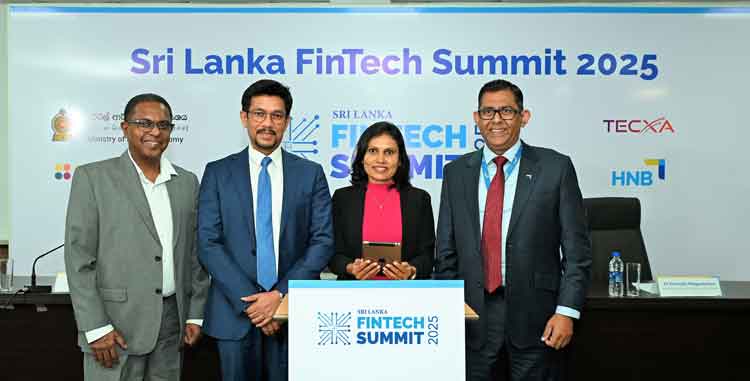Sri Lanka is gearing up for what could be its most ambitious push yet into the digital economy. The country’s first-ever dedicated FinTech Summit, scheduled for September 2025, is aiming to secure US $100 million in investment commitments. It’s an eye-catching target for a nation navigating an economic turnaround, but is it realistic—and what does it mean for the wider business community?
This post explores Sri Lanka’s 2025 FinTech momentum, why the summit matters, and what challenges and opportunities lie ahead for local entrepreneurs, investors, and the broader economy.
Why FinTech—and Why Now?
Sri Lanka’s government has clearly identified financial technology as a cornerstone of its economic revival. The 2025 Budget allocated LKR 3 billion specifically to expand the digital economy. The Ministry of Technology’s stated goals include achieving US $5 billion in ICT exports by 2030 and boosting digital revenues to US $15 billion.
FinTech sits at the heart of this strategy.
- Financial inclusion: With around 30% of adults still unbanked, FinTech offers cost-effective ways to deliver savings, credit, and payment services even to remote areas.
- Digital trade and remittances: As Sri Lanka looks to grow exports and remittances, seamless payment systems and secure transactions are essential.
- Investment attraction: A strong FinTech ecosystem signals openness to innovation—an important selling point for foreign investors and development partners.
This is why the government and private sector are betting big on a dedicated summit to gather stakeholders, build networks, and—crucially—raise funds.
The Summit’s $100 Million Target: Ambitious or Achievable?
When the announcement came that the summit aims to attract US $100 million in investment commitments, reactions were mixed.
- Optimists point out that Sri Lanka is coming off a period of relative stability, with Q1 2025 FDI inflows up 90% compared to last year. Investors are showing renewed interest in manufacturing, tourism, and ICT services.
- Skeptics warn that FinTech remains underdeveloped locally. Regulatory uncertainty, legacy banking systems, and low consumer awareness could limit real deal-making at the summit.
But the headline target itself may be partly symbolic. Even if only half that amount is actually invested over time, the event could position Sri Lanka as a regional FinTech hub, attracting founders, venture capitalists, and banks to the conversation.
What to Expect at the 2025 FinTech Summit
While a detailed agenda is still under wraps, industry insiders expect the summit to include:
- Investor forums showcasing Sri Lankan startups and scale-ups.
- Panel discussions with regulators, banks, telcos, and fintech entrepreneurs on issues like Know Your Customer (KYC) processes, payments interoperability, and cross-border remittances.
- Partnership announcements as local banks, mobile providers, and payment gateways seek to integrate new solutions.
- Pitch competitions aimed at attracting venture capital.
Such events are proven catalysts in other emerging markets. For example, fintech summits in Africa and Southeast Asia have helped unlock funding rounds, pilot partnerships, and even policy reforms.
Local Players Leading the Charge
Sri Lanka is not starting from zero.
- LankaQR is being overhauled in 2025, with aims to integrate it with India’s UPI, Alipay, and WeChat Pay.
- GovPay launched in February 2025, enabling online payments for government services, from expressway tolls to fines.
- Local startups in areas such as micro-lending, payment gateways, and e-commerce integrations are maturing, albeit slowly.
The summit will try to connect these local successes with global capital and expertise.
Opportunities for Local Entrepreneurs

For Sri Lankan founders and startups, the 2025 FinTech Summit is more than a PR event. It’s a chance to:
- Pitch to international investors and move beyond bootstrapping or local angel networks.
- Forge partnerships with banks, telcos, and large retailers.
- Learn from global trends in compliance, UX, and financial inclusion models.
- Influence policy by sharing on-the-ground challenges with regulators and government agencies.
Policy Support Matters
It’s no accident this summit is happening in 2025.
- The government wants to show it’s serious about reforms, even while still working through IMF-backed fiscal targets.
- The Central Bank is under pressure to modernize payment regulations and KYC rules to match regional peers.
- Donors and development partners are ready to co-invest—but often need proof of local commitment and coordination.
A successful summit could help unlock not just private venture capital, but also concessional financing for digital infrastructure and capacity building.
Challenges Ahead
Of course, big announcements don’t automatically fix structural challenges.
- Consumer trust: After high-profile financial scams in the past, winning user trust in digital finance is crucial.
- Regulatory clarity: The FinTech sector wants faster approvals, clearer guidelines, and sandbox frameworks.
- Infrastructure gaps: Reliable internet, affordable devices, and digital literacy remain barriers, especially in rural areas.
These are not quick fixes—but the summit at least puts them on the national agenda.
Final Thoughts: A Defining Moment for Sri Lanka’s FinTech Sector?
Sri Lanka’s 2025 FinTech Summit represents both a challenge and an opportunity. The US $100 million investment target may be ambitious, but even partial success could transform the conversation about the country’s role in South Asia’s digital economy.
For businesses, investors, and policymakers, this is the moment to get involved—shaping not just one event, but the future of Sri Lanka’s financial landscape.





